by Olivia Buehler
Within the collections of the Carnegie Museum of Natural History, one may be surprised to find more than the biological specimens, fossils, and extensive anthropological and archaeological materials that the museum is best known for. As a major scientific institution that collects and conducts research, the Carnegie Museum of Natural History also has its own “Natural History Art” Collection, formerly known as the M. Graham Netting Animal Portraiture Collection, named after the herpetologist, former CMNH director, and founder of the collection. Consisting mostly of mid-twentieth-century naturalist and scientific illustrations, this collection serves as a useful addition to the museum’s resources that complements its research activities. Naturalist and scientific illustration involves skills beyond image-making and can resemble scientific research in that it requires artists to closely observe, and often travel to, their subjects to fully understand them and render them accurately.
Within the collection are several women artists and scientific illustrators who each contributed to the genres of naturalist and scientific illustration. In this post I will feature the artists Winifred Austen, Germaine A. Bernier-Boulanger, Florence Malewotkuk, and an artist only identified (for now) as “Deirdre E. L.,” who are all worth celebrating this Women’s History Month. Although greatly outnumbered in the collection by their male counterparts, the women in CMNH’s Natural History Art Collection, and their respective works, speak volumes. With some pieces dating to over one hundred years ago, these artworks are proof that women have always had important roles to play in art and science, and it is just the conditions of patriarchal societies that have limited them. Despite their existence as a minority in the field of naturalist and scientific illustration, and the associated income and opportunity disparities that came with that status, these women persevered to create the beautiful, informative, and humorous art below.
Winifred Austen
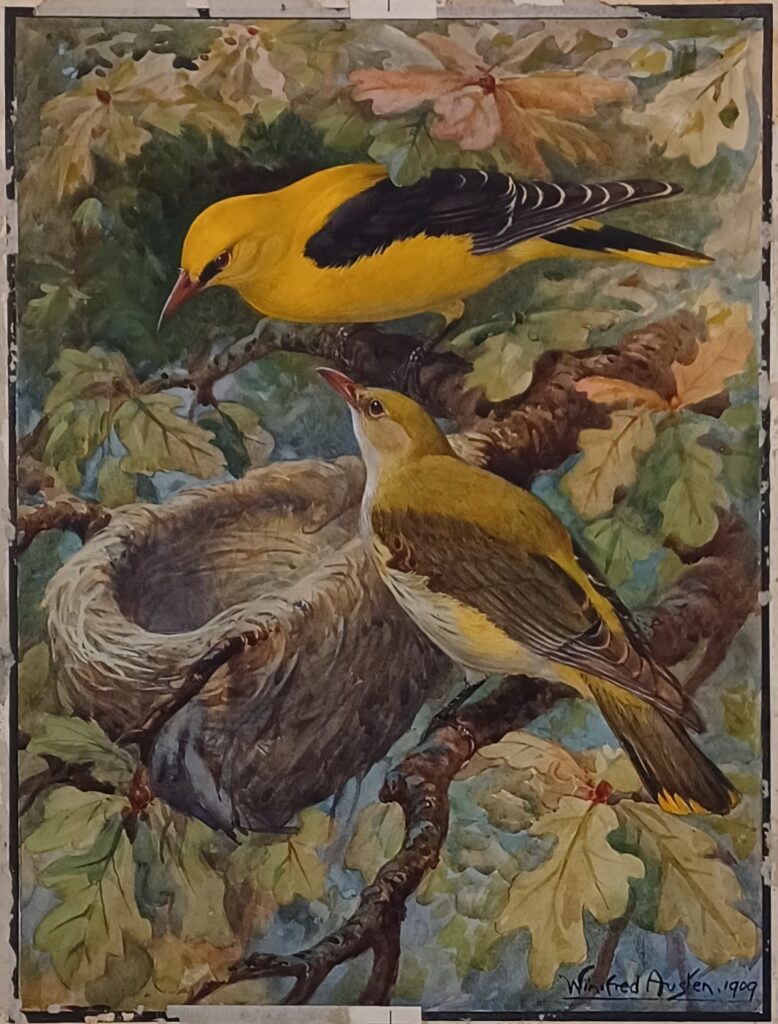
One such artist is Winifred Austen, an English painter, etcher, and engraver whose work became most popular in the 1940s and 1950s with her wildlife illustrations in books and magazines. Produced as an illustration for F.B. Kirkman’s British Bird Book, Austen’s Golden Orioles (1909) is a lovely example of her expertise in wildlife painting, specifically birds. While the orioles are painted with a thoughtful hand in precise, impressive detail, their surrounding environment is rendered in a far more impressionistic style, emphasizing Austen’s utilization of her formal training in the arts, but also her choice to employ individualistic, stylistic expression and creativity. Even though these watercolors were intended to act as visual references for the texts they were accompanying, Austen still managed to contribute in a manner that was unique to her. Austen’s art can be praised for the dynamism of her subjects, and her portrayal of birds as they would appear in their natural environments, rather than in the static and perfectly poised way some other naturalist illustrators tend to favor.
Austen attended and trained formally at the London County Council School of Arts and Crafts and exhibited her work often with the Royal Society of Painter-Etchers, following a similar trajectory as many of her male contemporaries. With that being said, Austen also made incredible progress despite being a minority in her practice, for example, she was the only woman to be published in the British Bird Book.
Germaine A. Bernier-Boulanger
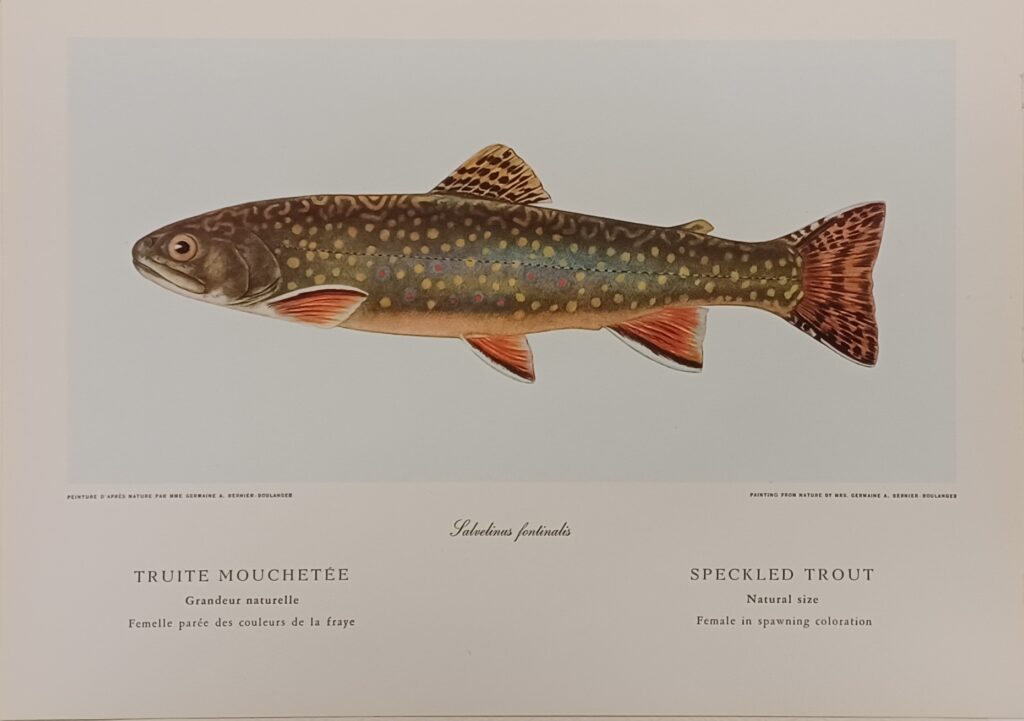
A prime example of a woman who knew her worth as a scientist, educator, and artist, and settled for nothing less, is Germaine A. Bernier-Boulanger (1909-1989). Salvelinus fontinalis, female (c. 1953), a highly detailed, scientific illustration of a female spotted trout, is one of three prints in the collection by Bernier-Boulanger. Unlike the more painterly quality of Austen’s watercolors, Bernier-Boulanger’s work highlights the more research-intensive, “art for science’s sake” approach to wildlife illustration that contributed greatly to the discipline of non-photographic specimen documentation. Bernier-Boulanger had formally studied embryology and invertebrate zoology and didn’t become a professional illustrator until after the age of forty. Before focusing on her art, Bernier-Boulanger was employed at the Montreal Botanical Institute, and later, the University of Montreal, where she left her post as an educator after experiencing no change in her career trajectory, despite voicing her disapproval of the discrepancies in pay and career advancement between herself and her male colleagues in the natural sciences department. During Women’s History Month, it is especially important to tell the stories of women like Bernier-Boulanger, not only because of their knowledge, skill, and contributions to their respective fields, but also because they challenged long-standing discriminatory practices against women within the institutions they worked for, acting as catalysts for change.
Florence Malewotkuk
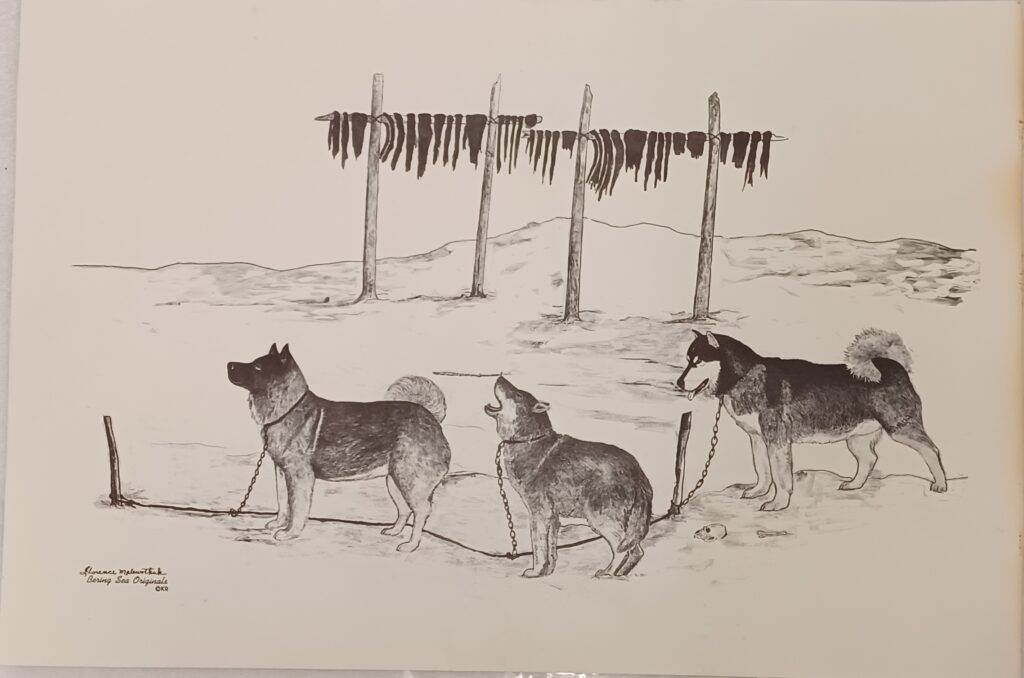
Florence Malewotkuk (1906-1971) (Yup’ik) was born in a village on St. Lawrence Island on the Bering Sea, which is part of Alaska. Malewotkuk’s Husky Dog Team (circa 1950s-60s) is one of three prints by the artist in the collection by Malewotkuk, each part of a series she titled “Bering Sea Originals.” Depicting husky dogs lined up in front of drying pelts, this print, along with the others in the collection depicting walrus and polar bears, offers unembellished images of local wildlife, and the intersection with nonhuman animals and Yup’ik communities. Showing talent from an early age, Malewotkuk began working as a professional artist in her early twenties when commissioned by Otto William Geist, an archaeologist, to capture everyday scenes of Yup’ik life. Further commissions followed for Malewotkuk later in life, and today her art is housed in collections across North America. Malewotkuk’s story indicates the opportunities that art production offers to women, and the importance of having members of Indigenous groups, especially women, depict their culture from their point of view.
Deirdre E. L.
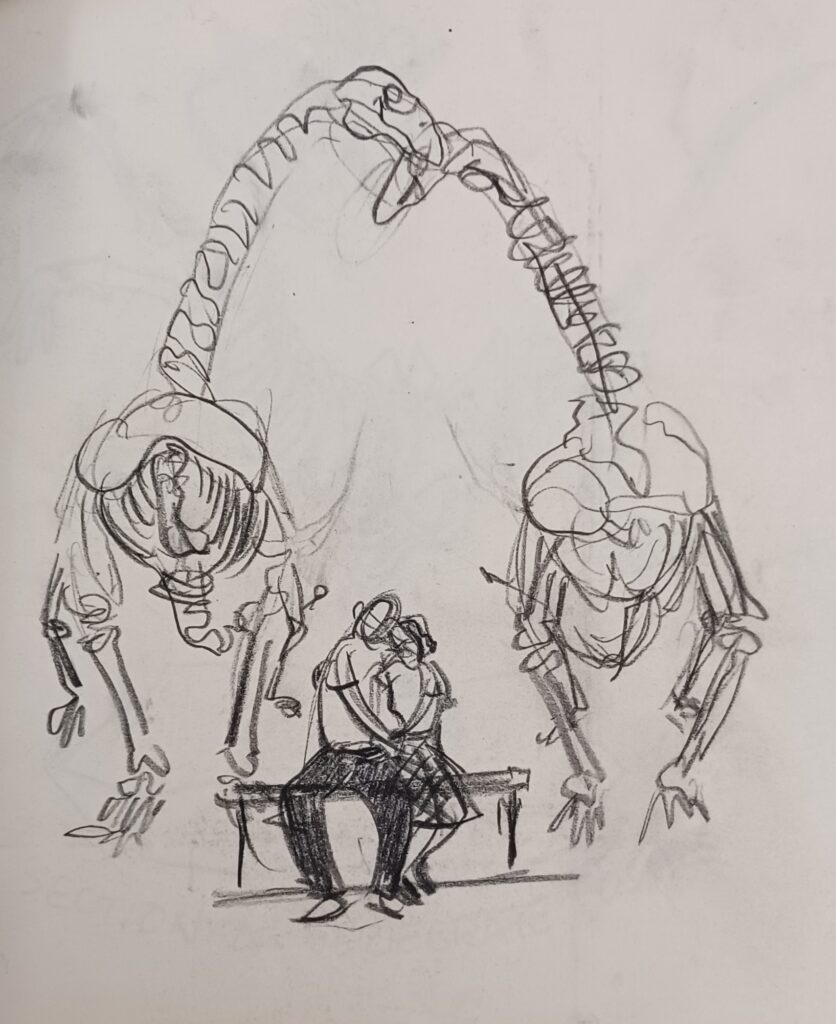
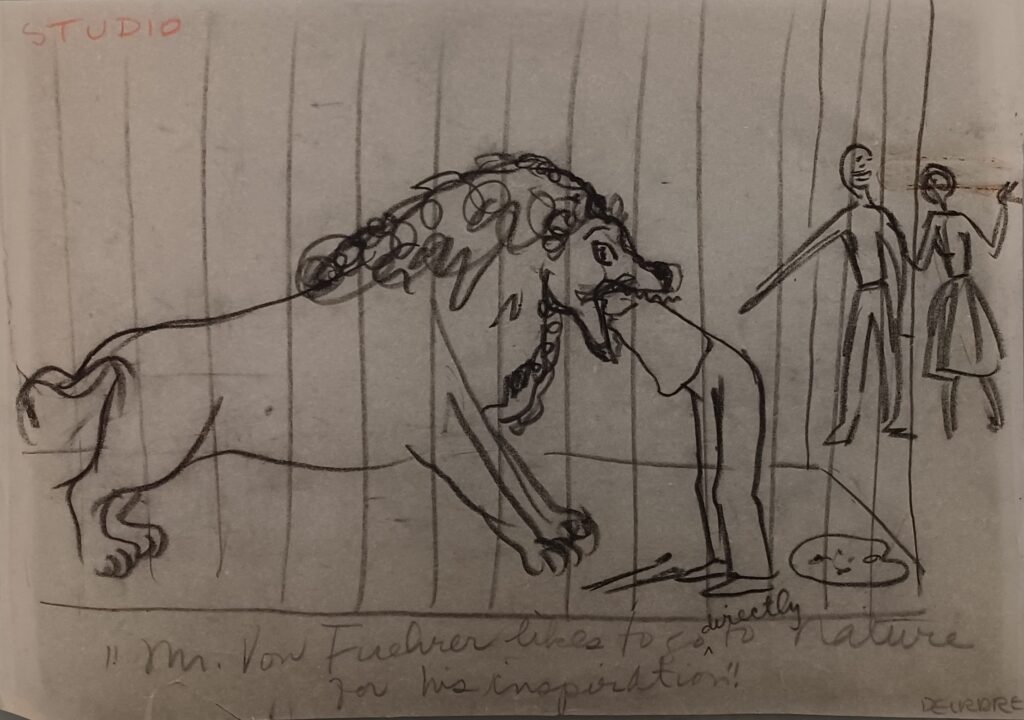
Tucked away in a drawer of archival ephemera in the Natural History Art Collection is a folder of comedic cartoon illustrations by the artist Deirdre E. L. With the signature “Deirdre” at the bottom of the sketches being the only source of information available on the artist, it would seem that we must let her work speak where a biography is absent. Perhaps designed for the amusement of CMNH staff or for print in museum publications, Deirdre’s sketches combine silly captions and quirky caricatures with relevant information about the museum. Her sketch of CMNH chief staff artist Ottmar Von Fuehrer jokes about his going “directly to nature” (by sticking his head in a lion’s mouth) for inspiration, and is a fine example of this fun dichotomy. Her heart-warming sketch of a couple embracing under an equally affectionate pair of dinosaur fossils captures her sketchy, endearing drawing style.
In this brief survey, I hope to have captured a glimpse of the talented women artists and scientific illustrators in CMNH’s Natural History Art collection. As a History of Art and Architecture and Museum Studies student at Pitt, I have been very interested in exploring the many intersections that exist between the disciplines of art and natural histories, including questions like: What distinguishes a scientific illustrator from an artist, if there is any distinction at all? How do women fit into and contribute to these respective disciplines historically? And how do studies of gender reveal vital information about science and art history? I look forward to discovering new artists as I continue to work with the Natural History Art Collection as an intern, especially women whose presence in the collection inspire me to learn more about those who challenged, and continue to challenge, societal expectations and make lasting contributions to the worlds of art and science.
Olivia Buehler is an intern in the Section of Anthropology at Carnegie Museum of Natural History.
Related Content
Mary Anning: For the Love of the Blue Lias
Echoes of Freedom in an Owl’s Call
Carnegie Museum of Natural History Blog Citation Information
Blog author: Buehler, OliviaPublication date: March 19, 2024
